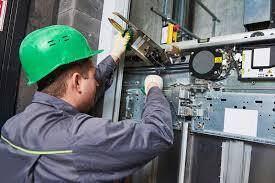Elevators are an essential component of modern buildings, providing convenient vertical transportation for passengers. With various types of passenger elevators available, it’s important to understand their unique features, functionalities, and appropriate applications. This guide will delve into the different types of passenger elevators and their specific uses.
1. Traction Elevators
1.1 Overview
Traction elevators operate using a system of ropes and pulleys, with a counterweight that balances the weight of the elevator car. This mechanism allows for smooth and efficient vertical movement.
1.2 Uses
- High-Rise Buildings: Traction elevators are ideal for tall buildings, typically servicing structures over 5 to 6 stories due to their ability to travel long distances.
- Heavy Traffic Areas: They can handle high volumes of passenger traffic, making them suitable for commercial spaces like office buildings and shopping malls.
1.3 Advantages
- Energy Efficiency: Traction elevators consume less energy compared to other types, especially when equipped with regenerative drives.
- Speed: They offer faster travel speeds, which is essential in high-rise buildings.
2. Hydraulic Elevators
2.1 Overview
Hydraulic elevators use a hydraulic piston to lift and lower the elevator car. The piston is driven by a hydraulic fluid that pushes it upward, while gravity brings it down.
2.2 Uses
- Low-Rise Buildings: Hydraulic elevators are commonly used in buildings up to 5 stories, such as residential complexes and small commercial buildings.
- Limited Space Installations: They require less space for installation compared to traction elevators, making them suitable for older buildings with space constraints.
2.3 Advantages
- Cost-Effective: They are generally less expensive to install and maintain than traction elevators, making them a popular choice for low-rise buildings.
- Simple Design: The hydraulic system is easier to manage, which can result in lower operational costs.
3. Machine-Room-Less (MRL) Elevators
3.1 Overview
Machine-room-less elevators are a modern evolution of traction elevators, eliminating the need for a separate machine room. The machinery is located within the hoistway or directly above the elevator car.
3.2 Uses
- Mid-Rise Buildings: MRL elevators are suitable for buildings ranging from 5 to 20 stories, making them a versatile option for many mid-rise applications.
- Space-Constrained Environments: Their compact design allows for installation in buildings where space is limited, such as hotels or residential complexes.
3.3 Advantages
- Space Efficiency: The absence of a dedicated machine room frees up valuable building space for other uses.
- Energy Savings: MRL elevators are often equipped with energy-efficient technologies, reducing operational costs.
4. Pneumatic (Vacuum) Elevators
4.1 Overview
Pneumatic elevators operate using air pressure and are typically designed as a cylindrical lift. They move up and down by creating a vacuum above the car, allowing atmospheric pressure to push the elevator upward.
4.2 Uses
- Residential Applications: Pneumatic elevators are popular for home installations due to their unique design and compact size.
- Accessibility Solutions: They provide an excellent solution for accessibility, particularly in multilevel homes.
4.3 Advantages
- Sleek Design: The transparent design often features glass walls, making it an attractive addition to modern homes.
- Minimal Structural Changes: Installation typically requires minimal modifications to the building structure.
5. Dumbwaiters
5.1 Overview
Dumbwaiters are small freight elevators designed to transport goods rather than passengers. They can be manually or automatically operated and are often used in restaurants, libraries, and multi-story buildings.
5.2 Uses
- Commercial Spaces: Ideal for transporting food, documents, or other items between floors in restaurants, hotels, and hospitals.
- Residential Applications: Useful in homes for moving laundry, groceries, or heavy items between floors.
5.3 Advantages
- Space-Saving: Dumbwaiters take up less space than standard passenger elevators and can be installed in tight areas.
- Efficiency: They streamline operations in commercial settings by reducing the need for staff to carry items between floors.
6. Observation Elevators
6.1 Overview
Observation elevators are designed with large glass panels, allowing passengers to enjoy scenic views while traveling. They are often installed in high-rise buildings, tourist attractions, and public spaces.
6.2 Uses
- Tourist Attractions: Frequently found in skyscrapers, amusement parks, and observation towers where views are a significant draw for visitors.
- Corporate Offices: Some high-end office buildings use observation elevators as a statement feature to impress clients and visitors.
6.3 Advantages
- Unique Experience: Provides a memorable experience for passengers, making it a popular choice in commercial and entertainment spaces.
- Aesthetic Appeal: Enhances the building’s design and contributes to its overall aesthetic.
Conclusion
Understanding the different types of passenger elevators and their uses is crucial for building owners, facility managers, and architects. Each elevator type offers unique advantages and is suited to specific applications, whether for high-rise commercial buildings, residential homes, or specialized environments. By selecting the appropriate elevator system, stakeholders can enhance building functionality, improve user experience, and ensure safety and compliance with local regulations. As urbanization continues to rise, the demand for efficient and innovative elevator solutions will only grow, making it essential to stay informed about the latest technologies and trends in elevator systems.

